It may have taken a while, but RockShox is now ready to unveil the all-new Pike, Lyrik and ZEB suspension forks for 2023.
All three RockShox suspension forks have been designed from the ground up and feature an entirely new chassis, a whole new damper and a completely reworked air spring. There’s also a host of extra features.
RockShox says this all came in a bid to improve traction, boost control and maintain the bike’s dynamic geometry, along with improving rider comfort.
If you're not familiar with the RockShox range, the Pike is, according to the brand, for the “new-school trail rider”, the Lyrik is an “all-mountain workhorse” and ZEB is for the “world’s toughest enduro tracks”.
While RockShox has been a little quiet of late, the launch of the Flight Attendant electronic suspension system in 2021 should have been the biggest clue as to what was going on behind the scenes.
That’s because they featured the new chassis, complete with the new pressure-relief valves at the rear of the lower legs.
And while the ZEB looked very familiar in appearance, the Flight-Attendant equipped Lyrik looked more angular and chiselled than the current model, and clearly was a sign of things to come.
Five things you need to know about the all-new RockShox Pike, Lyrik and ZEB forks
- Ultimate and Select+ forks will feature the new Charger 3 damper, which allows for external high- and low-speed compression and rebound-damping adjustment
- All models get the new RockShox DebonAir+ air spring
- Pressure-relief valves now feature on the lower legs (they're blanked off on the lower two models of the range, but can be purchased aftermarket)
- The Ultimate-level forks receive a new longer bushing package to help lower friction as well as ‘ButterCups’, which reduce high-frequency vibrations
- RockShox has unveiled new travel brackets for each model, with the Pike now offering 120-140mm, Lyrik 140-160mm and the ZEB 160-190mm
So, what has RockShox done to these stalwart regulars that feature frequently among the best mountain bike suspension forks?
RockShox says this was a 'sum of its parts' approach to redesigning these established models so, while there’s plenty of headline-grabbing tech on show, it’s the detail you can’t see that arguably makes the most difference.
There's a lot to cover, so dive in for the full story – or you can jump ahead to our first-ride impressions of the 2023 RockShox ZEB Ultimate.
More 2023 RockShox launch stories
All-new RockShox Charger 3 damper

Let's start with the new Charger 3 damper, which features on the Select+ and Ultimate-level forks within the Pike, Lyrik and ZEB line-ups.
On that note, all three forks are available in four versions, where the base and Select models get the new but less adjustable Rush RC and Charger RC dampers, before the Select+ and Ultimate models step up to the Charger 3. We've covered the full 2023 RockShox Pike, Lyrik and ZEB range towards the end of this story.
RockShox claims its end goal with the Charger 3 was to “reduce the harshness that makes it to the rider’s hands, leading to full rider control and confidence”.
To do this, RockShox set about creating a totally new damper.
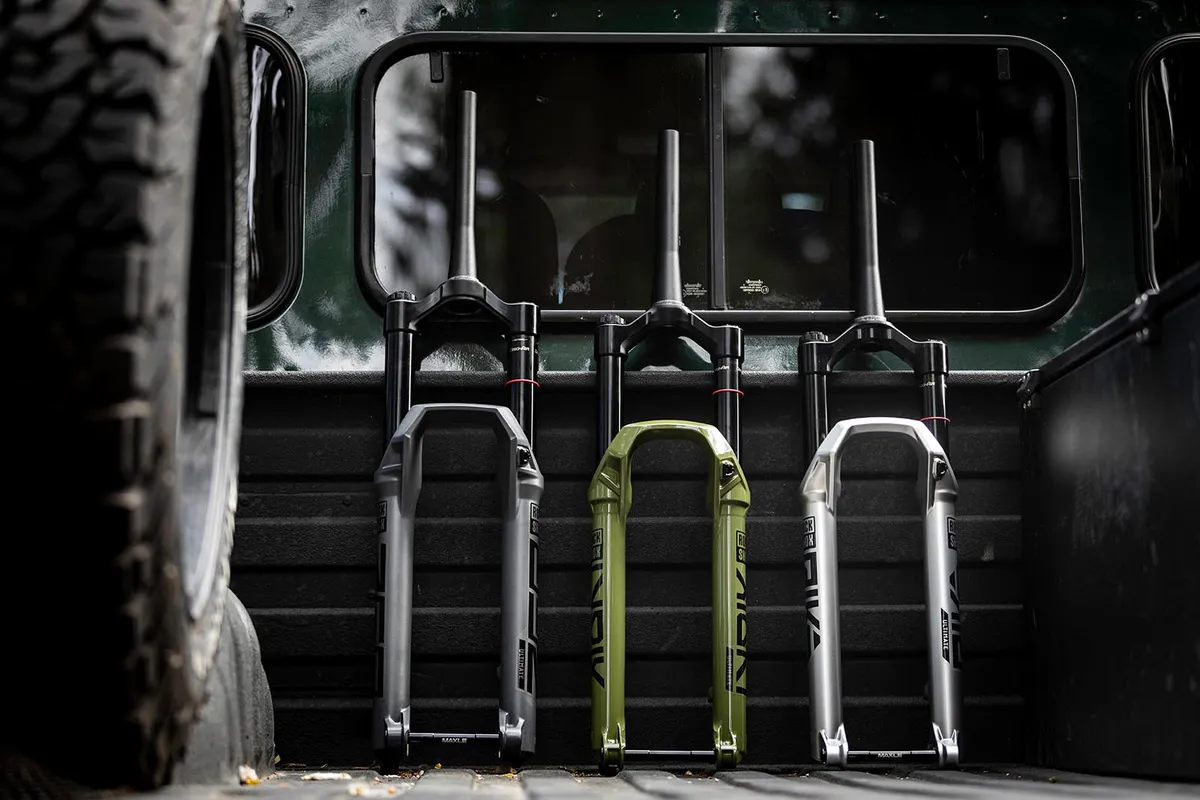
Gone is the bladder design featured in the previous fully-sealed Charger 2.1 damper. The Charger 3 damper instead uses a coil-spring backed IFP (Internal Floating Piston).
The Charger 2 and 2.1 sealed-cartridge design used a bladder to help separate the air and oil within the system. Under compression, the oil displaced by the fork’s damper expands the bladder. As the fork changes direction (and enters the rebound phase), the oil is forced back out of the bladder, as it contracts.
Bladders work well and are friction-free. As we all know, friction is the enemy of suspension sensitivity, so the less there is, the better.
However, RockShox felt there was scope for improvements and the IFP design seemed to be the best solution.
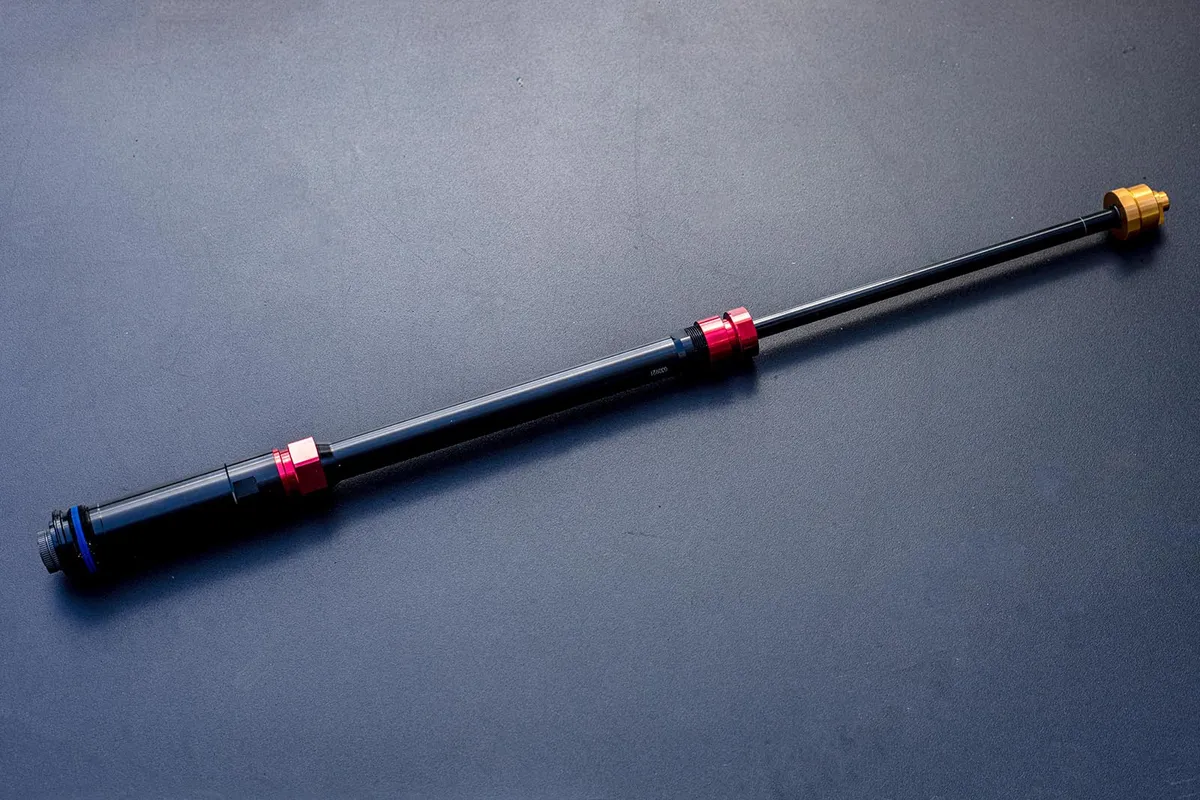
With the Charger 3, when the fork compresses, the IFP is pushed upwards as oil is displaced by the damper’s piston. The coil spring behind the IFP then kicks in, applying pressure to the piston in the opposite direction, trying to force it back to its original starting position. In the process, it helps push the oil into the rebound circuit.
IFPs are most commonly found in rear shocks (though Fox’s GRIP and SR Suntour’s R2C2 fork dampers use a similar design, as does the RockShox Charger RC damper found on Select model forks in the new line-up).
However, these are generally backed by a high-pressure nitrogen charge. Using a relatively light coil spring rather than a nitrogen charge means the IFP seal doesn’t need to be as tight to still do its job (maintaining the seal), which in turn helps to reduce friction.
The new system can also ‘self-bleed’ – something the bladder design can’t do. Over time, lubrication oil from the lowers can work itself into the damper. With a bladder design, this change in oil volume can alter pressure in the system, leading to damping inconsistencies or even worse.
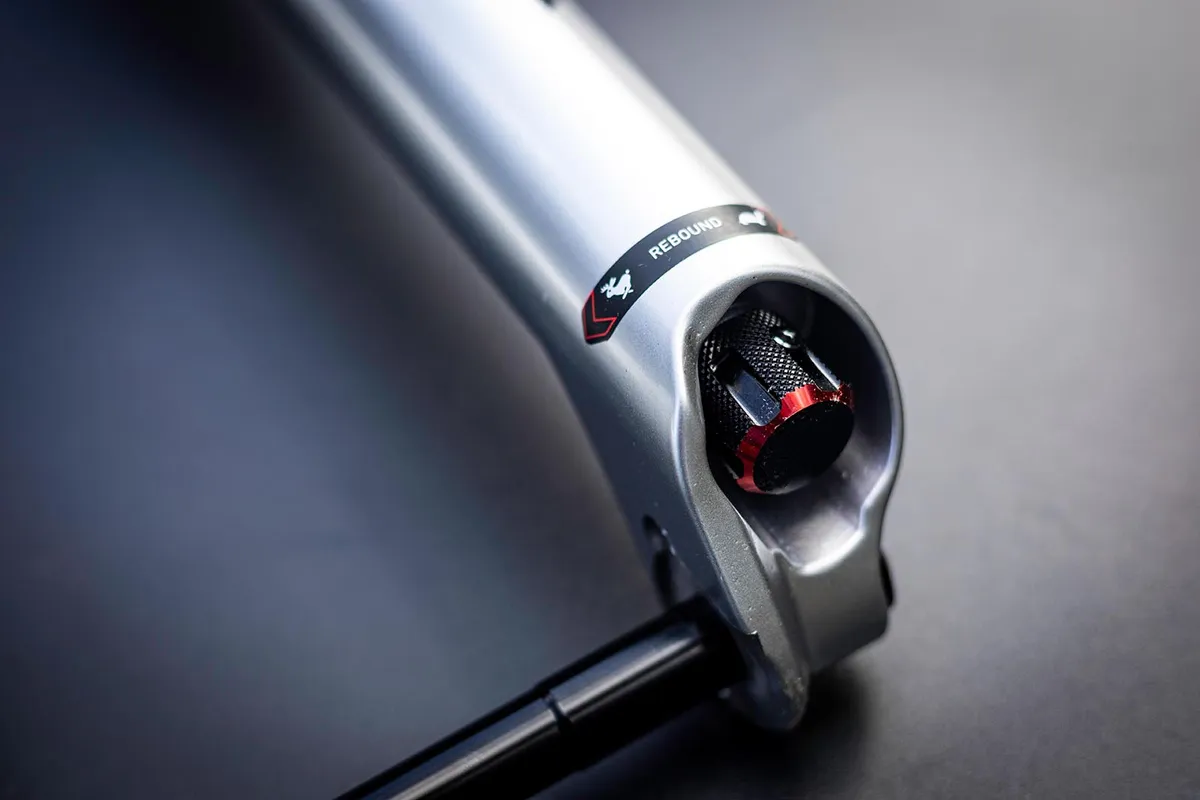
In the Charger 3’s case, as and when this does happen, the damper is able to purge any excess oil and maintain the correct oil volume.
It’s now completely silent, too. The previous generation wasn't exactly noisy, but the wheezy sound you may have heard before on the rebound stroke has now been silenced by – and this is some clever naming, right here – something called "the silencer". This better controls oil flow and, in doing so, keeps everything nice and quiet, according to RockShox.
Overall, RockShox says the switch helps the IFP to produce more consistent back pressure on the system and create a more reactive and consistent damper.
Independent adjustments
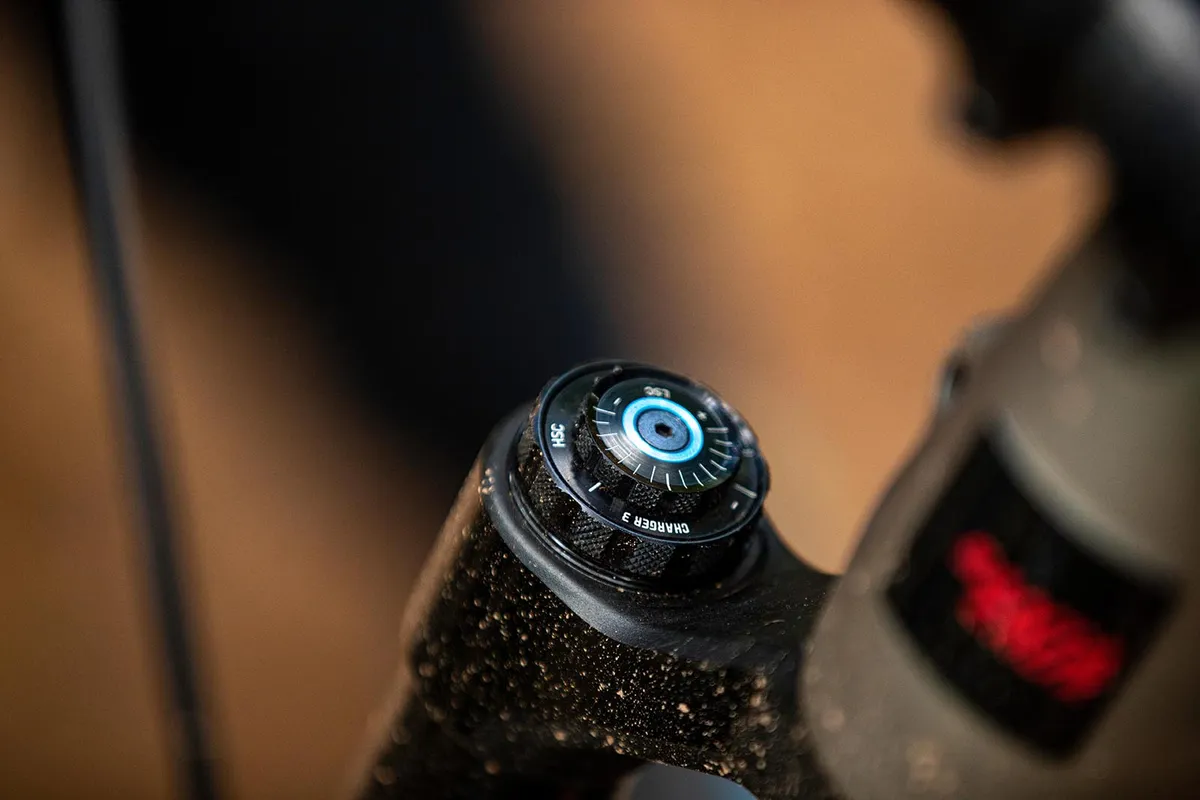
One of the biggest talking points here is the damping adjustment on offer (we’ll come onto the spring later).
The new Charger 3 offers both high- and low-speed compression-damping adjustment (at the top of the fork leg, just as before), along with rebound damping that can all be externally altered.
The dials are chunkier and more pronounced than on the previous Charger 2.1 and the markings are slightly different, providing a better indication as to where the middle settings might be.
These changes include the rebound adjuster, too, which just looks and feels that bit better finished and nicer to use.
When it comes to adjustment, there’s 15 clicks of low-speed compression damping, five clicks of high-speed damping and 18 clicks of rebound damping.
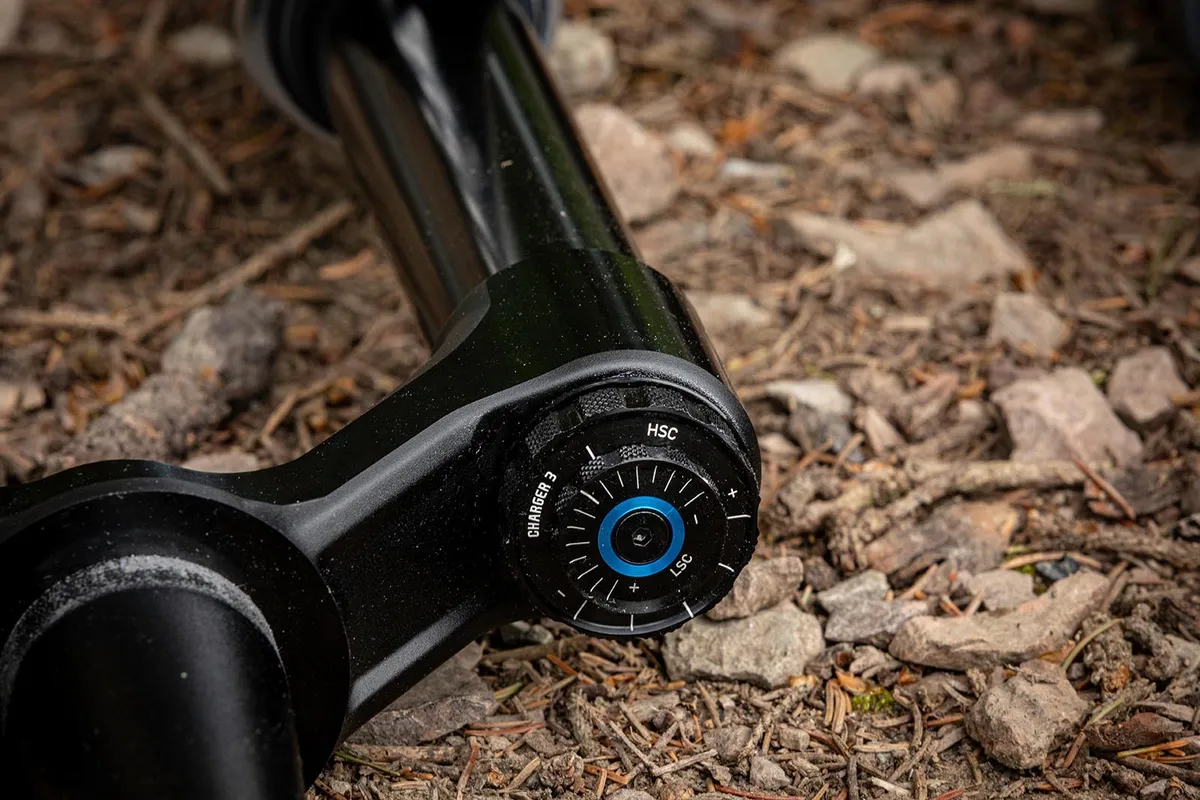
RockShox says these adjustments are truly independent of one another and make a meaningful difference to the ride experience. That means, in theory, you can alter the low-speed compression damping without it affecting the high-speed damping.
Open the damper up and RockShox has switched to using machined metal parts, which are said to be more accurate, though more expensive to produce.
More significantly, new high- and low-speed valving is claimed to be the key as to how the adjustments are able to operate separately.
The Charger 3 uses two separate valve assemblies to control the compression adjustment ranges for the high- and low-speed damping.
There’s more oil flow, too, which is said to be more accurately metered through the two separate valve structures. RockShox says this greater flow of oil now passes through the high-speed valving first, before moving into the low-speed compression assembly.
By maintaining the correct amount of oil flow through both circuits throughout the full range of high- and low-speed compression adjustment, in theory, both can be altered independently of one another.
RockShox Charger 3 damper compatibility

Before we move onto the other new fork features, just a quick word on compatibility.
The Charger 3 damper will only fit into 2023 RockShox Pike, Lyrik or ZEB forks (those that don’t currently have one can be upgraded), or 2021 (and newer) ZEB forks.
As it stands, only the Ultimate and Select+ level forks feature the Charger 3 RC2 damper, while the Select model forks will feature the existing Charger RC damper (which also uses an IFP design).
The base level forks use the Rush RC damper.
RockShox ButterCup technology

We first saw ButterCups introduced within the Flight-Attendant equipped forks launched in 2021.
This new tech from RockShox sits within a small assembly housed at the base of the air spring and damper shafts, inside the lower legs of the fork. Inside this assembly are rubber bumpers, which provide 4mm of vertical compliance/squish.
The idea of ButterCups is to absorb high-frequency, low-amplitude vibration – the sort of stuff we’d likely refer to as trail buzz or chatter.
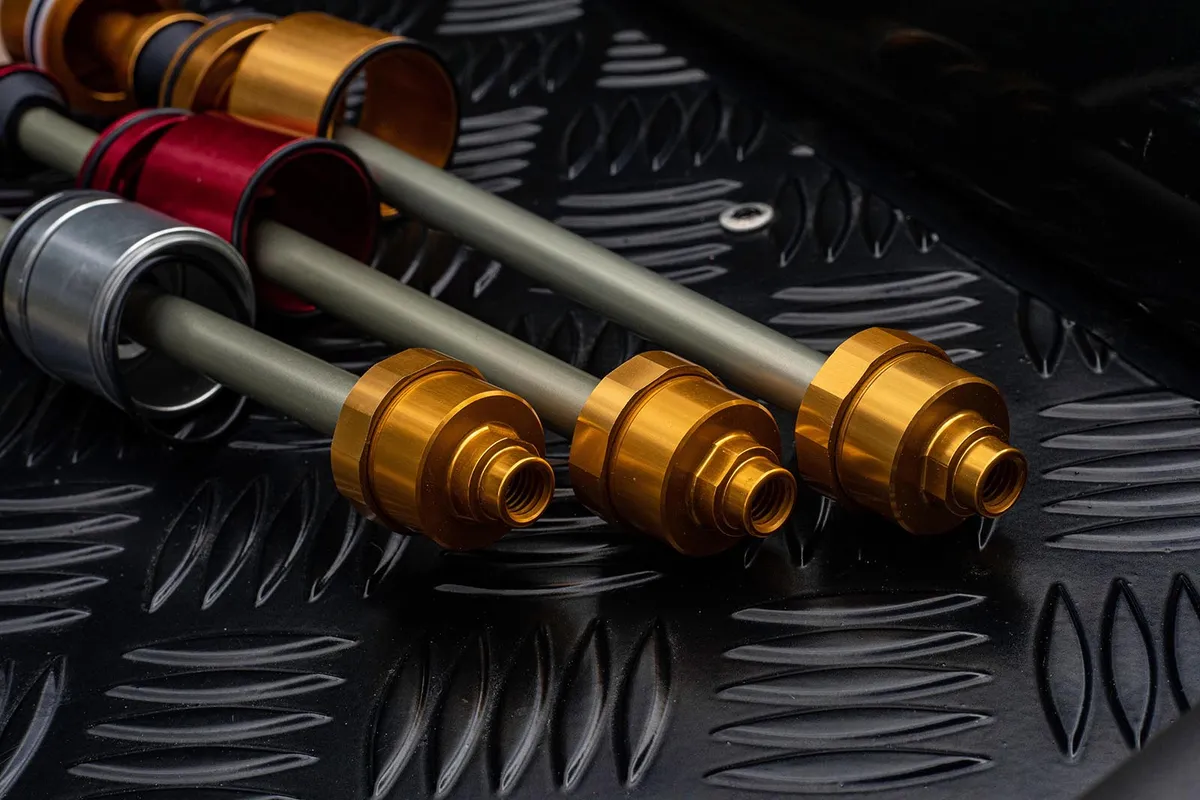
In testing, RockShox claims high-frequency vibrations were reduced by up to 20 per cent. This will likely translate to less hand/arm fatigue over a longer run, which is no bad thing.
Total weight for the ButterCups system (assuming you have them on both sides – RockShox says you can add them to a single side, though they’ll be half as effective) is 39g.
ButterCups aren’t retrofittable to older RockShox forks because they take up more internal real estate. Currently, they’re offered only on Ultimate-level forks, but if you do buy any other 2023 model, you can upgrade down the line.
All-new RockShox DebonAir+ air spring
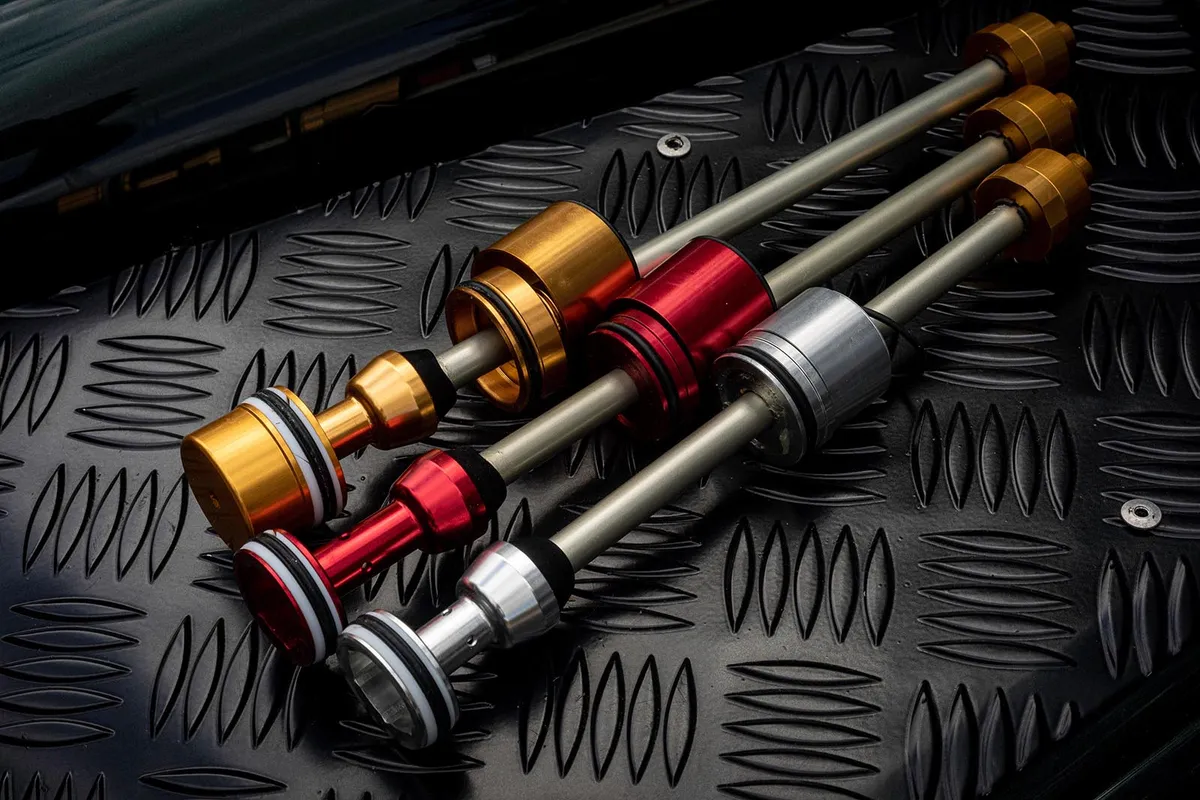
As well as creating a new damper, RockShox has revamped their air spring, too.
While the DebonAir spring introduced in 2018 offered a very sensitive, plush feel, riders complained that it could, at times, cause the fork to ride lower in its travel. While it wasn’t something we at BikeRadar were ever bothered about, others were.
That resulted in a change in 2020, which saw RockShox reposition the dimple (that equalises the pressure between the positive and negative air chambers) so the fork rode higher in its travel (and equalised at full-extension for easier setup). This change resulted in the loss of some sensitivity, though.
The new DebonAir+ spring is intended to strike a balance of the two, offering a supple ride feel with plenty of support. That means repositioning the dimple (bypass port) again, as well as changing the positive and negative air-chamber volumes.
Lower leg castings (specifically on the Pike and Lyrik, which have a totally new chassis) have been designed with the cast volume taken into account – RockShox says this has been considered like a third air chamber throughout the compression phase. Because of this, RockShox has tuned the lower leg volume and its effect (on ramp up) into account during the design process.
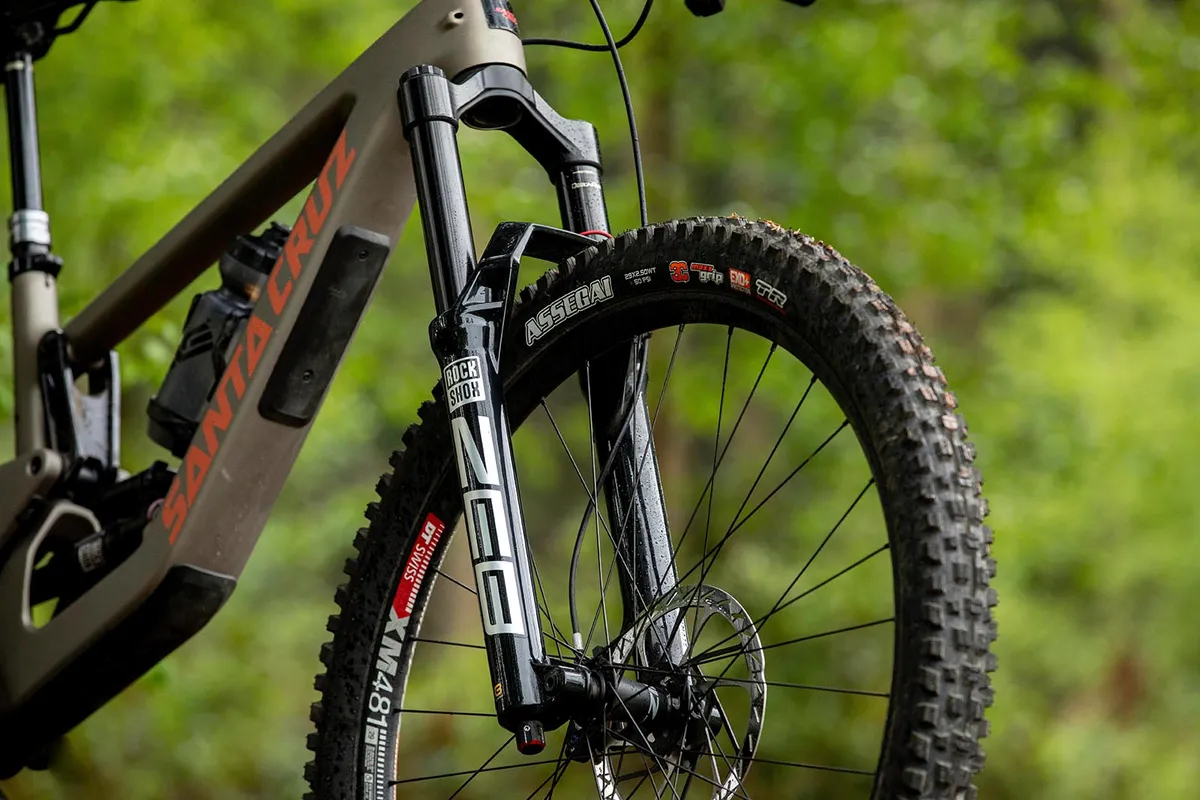
To bring back some of that supple initial stroke sensitivity we applauded the older fork for, negative air volumes across all forks have been increased.
Even the switch to an aluminium rather than plastic air-spring piston (which can be made thinner than the plastic equivalent) helped the brand to maximise the air volume to the best of its abilities.
Plus there’s a more sophisticated seal assembly on the air piston (consisting of a glide ring, quad ring and o-ring), which better helps control air flow between positive and negative air chambers.
DebonAir+ air springs will feature across all new 2023 Pike, Lyrik and ZEB models. While you can’t upgrade older Pike or Lyrik forks, ZEB owners can buy the DebonAir+ spring as an aftermarket upgrade.
Relieving pressure
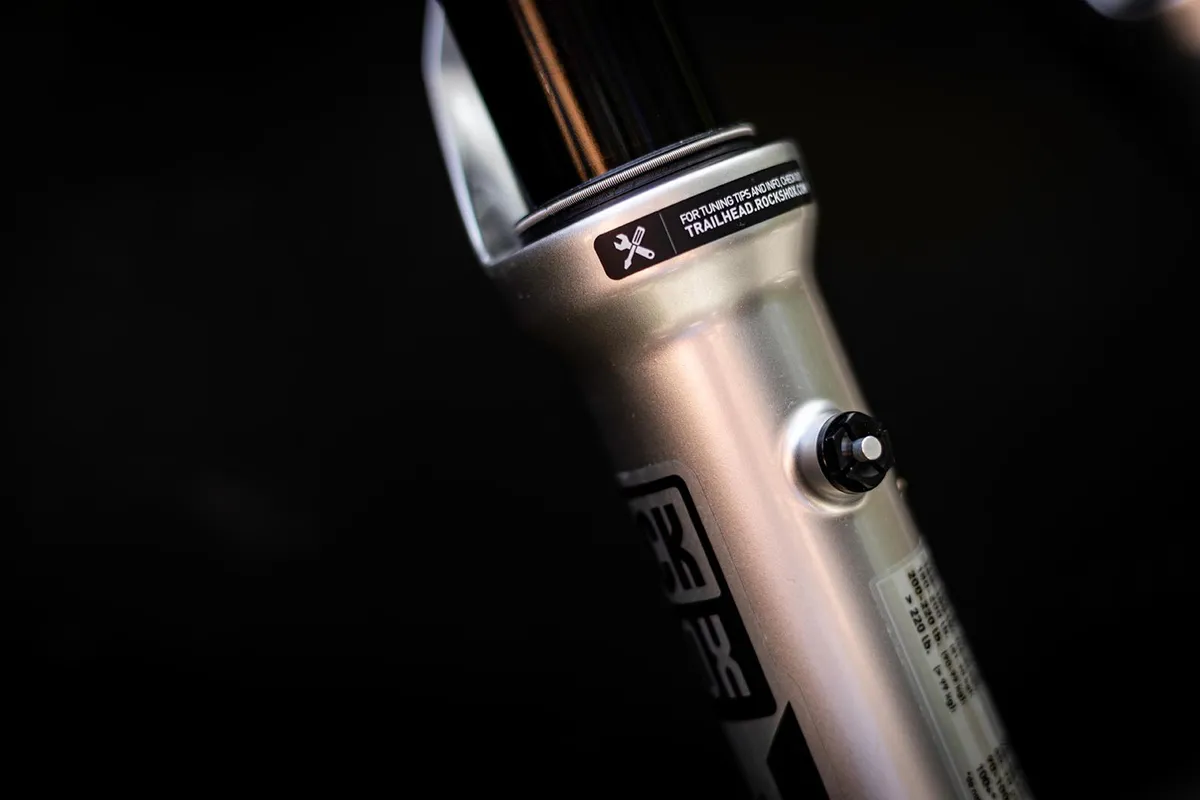
Bleed buttons, or as RockShox refers to them, pressure-relief valves (PRVs for short), have been around for a while. Most recently, we’ve seen them used on the very impressive Fox 38 and Fox 36, which scored highly when we reviewed both back in 2021.
The idea behind them is to allow you to easily bleed any excess air that builds up in the lower legs of the fork, which can often happen when riding at altitude or in really hot climates. All it takes is the push of a button – riders could often tackle this by slipping a blunt/clean cable tie down behind the wiper seal, though this can cause damage if done incorrectly.
Currently, only the Ultimate and Select+ level Pike, Lyrik and ZEB feature PRVs, though the lower leg castings used across lower-tiered models can be upgraded if you so wish.
2023 RockShox Pike, Lyrik and ZEB suspension travel changes
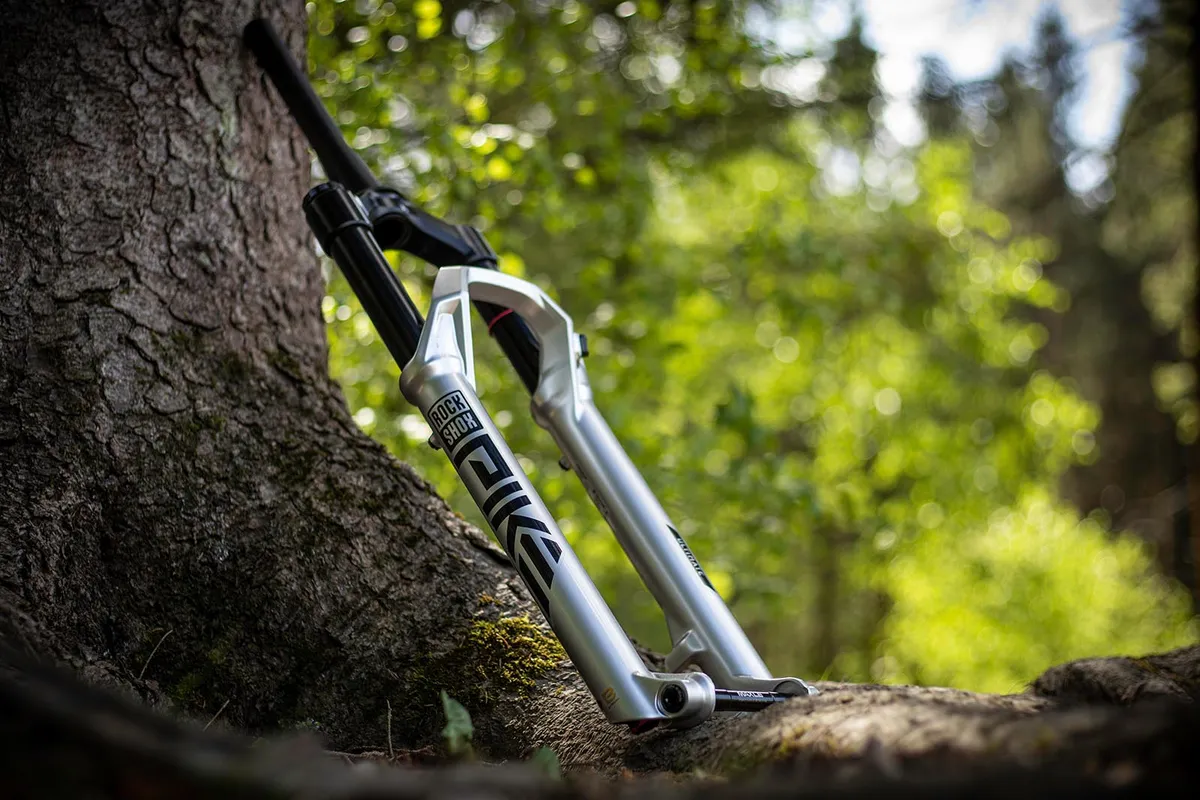
In order to better tune the air spring for the specific type of riding each fork has been designed for, RockShox has introduced new travel brackets across the range.
The Pike fork will now only be offered with 120, 130 or 140mm of travel (previously it was 120 to 160mm).
Lyrik comes with 140, 150 or 160mm of travel, while the ZEB travel range includes 160, 170, 180 and 190mm.
New air-spring shafts can be purchased aftermarket if you’re keen on changing how much travel is on offer.
2023 RockShox Pike, Lyrik and ZEB chassis changes
We’ve already covered off many of the internal changes and touched on how the new chassis differs from older models. However, the new Pike and Lyrik, in particular, really do look quite different to their predecessors.
Both now feature more angular looks and a machined crown, just like that of the RockShox SID and ZEB.
Other changes include the cable-clamp design and the addition of the new 'Hub End Cap Adaptors'. Where RockShox offers a big cut-out at the lower leg drop-out to account for their wide-diameter torque caps (which are said to help enhance the connection between hub and fork, boosting stiffness), wheels that don’t feature these oversized hub end caps aren’t as quick to install, simply because locating the axle is a little harder.
RockShox now offers small adaptors that can be screwed into these cut-outs, reducing their size and making fitting wheels without torque caps that bit quicker and easier.
All Ultimate-level forks also benefit from the 'Ultimate Bushing Package'. RockShox says these bushings are 53 per cent longer than the standard offering, which should better support the upper tubes, distribute the load over a larger area and help to further reduce friction (and binding under load) within the fork.
And before you ask, no, you can’t upgrade to these longer bushings unless you fork out (see what we did there?) for an Ultimate-level set of lower legs.
Don’t despair, though, all of the new 2023 forks feature more bushing overlap and a claimed improved stiffness-to-weight ratio. RockShox claims the new Pike offers 13.5 per cent more torsional stiffness, while the Lyrik jumps up by 20 per cent over the 2022 equivalent.
The competition
As ever, the closest rivals to these new forks come from Fox in the shape of the Fox 34, 36 and 38 offerings.
Like RockShox, Fox offers all three of these forks with different dampers, features and tweaks to the chassis to cater for different price ranges.
2023 RockShox Pike, Lyrik and ZEB specs and prices
RockShox Pike Ultimate
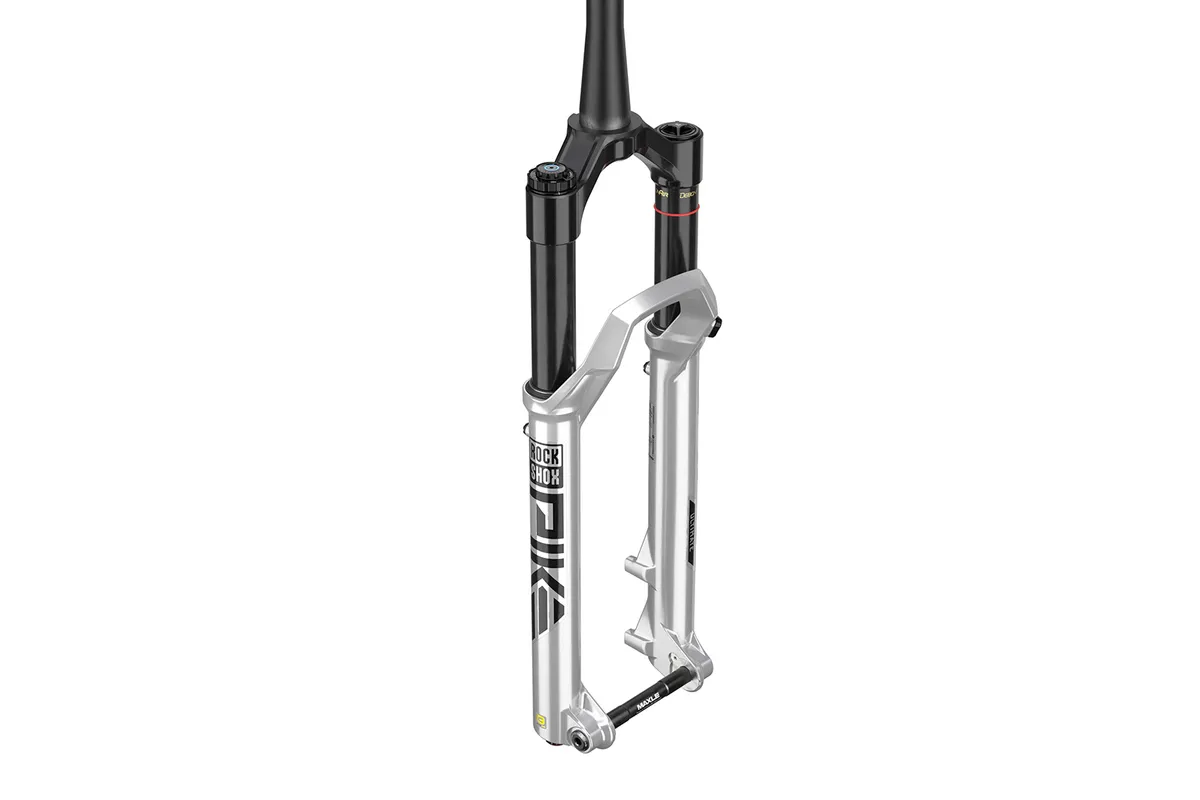
- Price: £1,017 / $1,054 / €1,139
- Damper: Charger 3 RC2 with ButterCups
- Spring: DebonAir+ with ButterCups
- Pressure-relief valves: Yes
- Bushings: Ultimate Bushing Package
- Travel: 120, 130 or 140mm
- Wheel size: 27.5in or 29in
- Offset: 37mm (27.5in) or 44mm (29in)
RockShox Pike Select+

- Price: OE only
- Damper: Charger 3 RC2
- Spring: DebonAir+
- Pressure-relief valves: Yes
- Bushings: Standard
- Travel: 120, 130 or 140mm
- Wheel size: 27.5in or 29in
- Offset: 37mm (27.5in) or 44mm (29in)
RockShox Pike Select
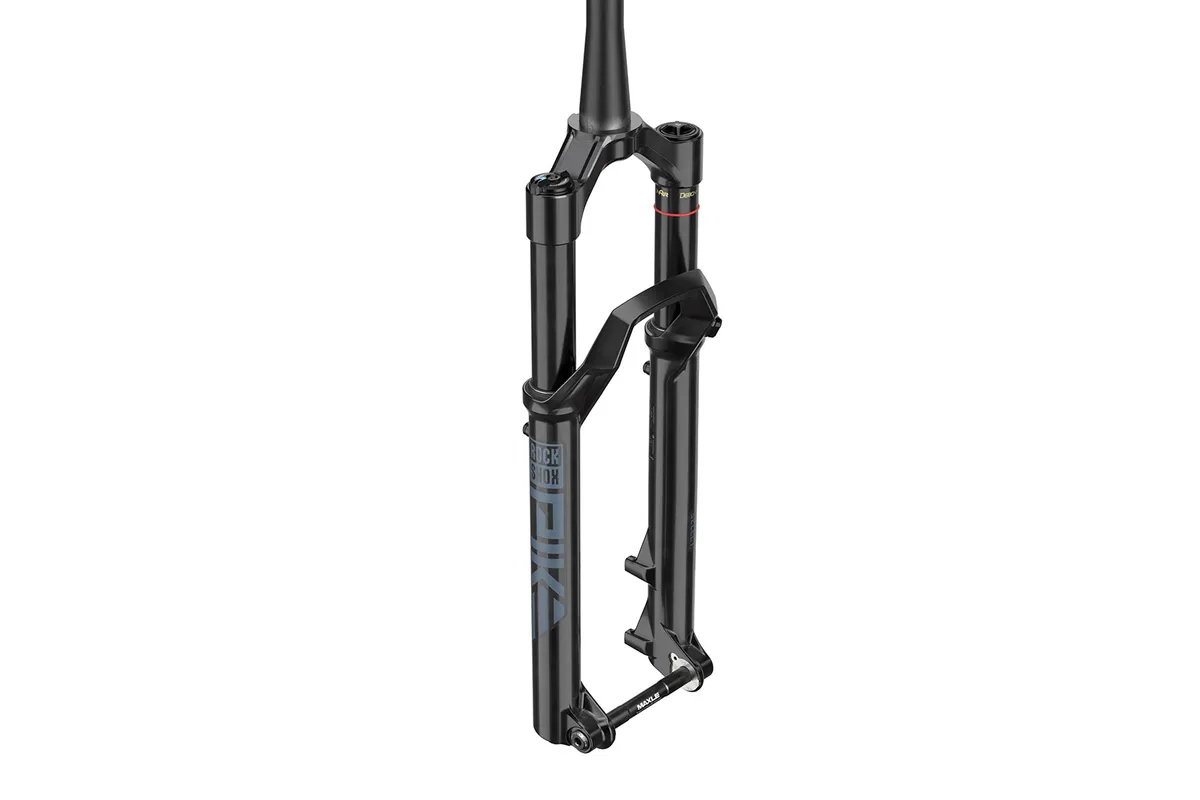
- Price: £763 / $790 / €855
- Damper: Charger RC
- Spring: DebonAir+
- Pressure-relief valves: No
- Bushings: Standard
- Travel: 120, 130 or 140mm
- Wheel size: 27.5in or 29in
- Offset: 37mm (27.5in) or 44mm (29in)
RockShox Pike
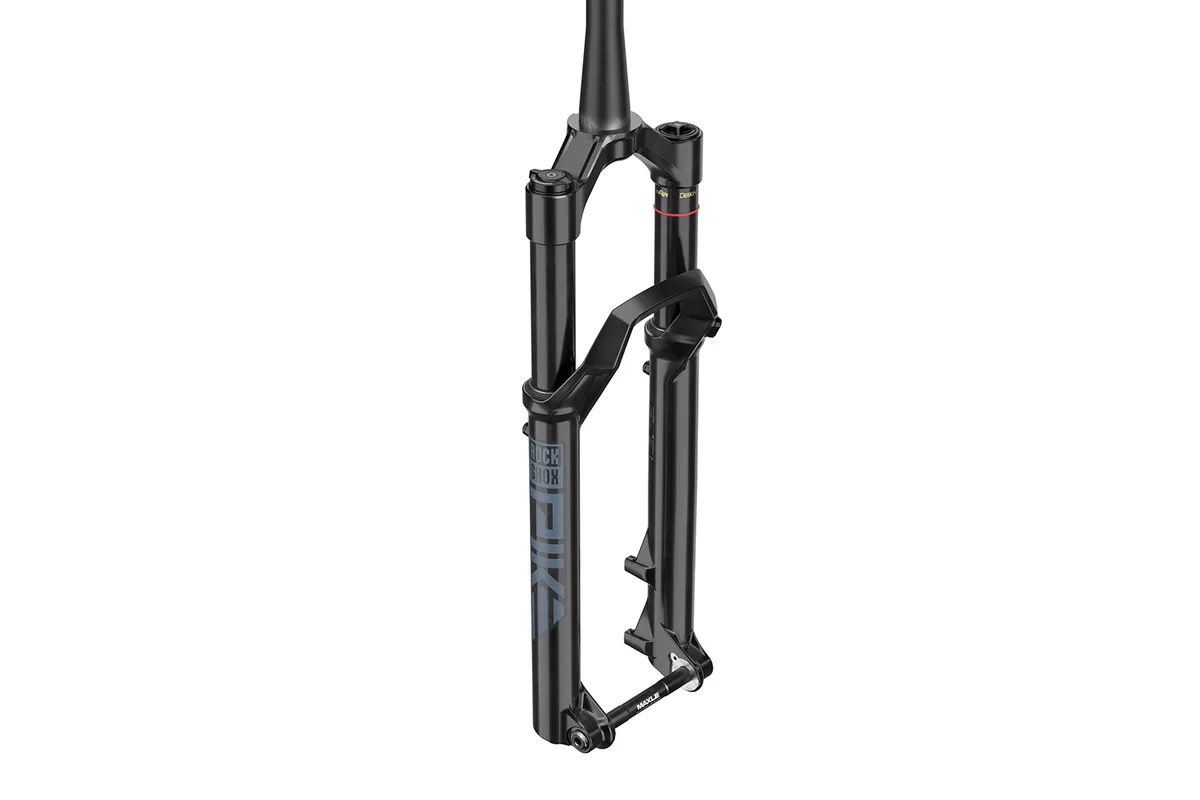
- Price: OE only
- Damper: Rush RC
- Spring: DebonAir+
- Pressure-relief valves: No
- Bushings: Standard
- Travel: 120, 130 or 140mm
- Wheel size: 27.5in or 29in
- Offset: 37mm (27.5in) or 44mm (29in)
RockShox Lyrik Ultimate
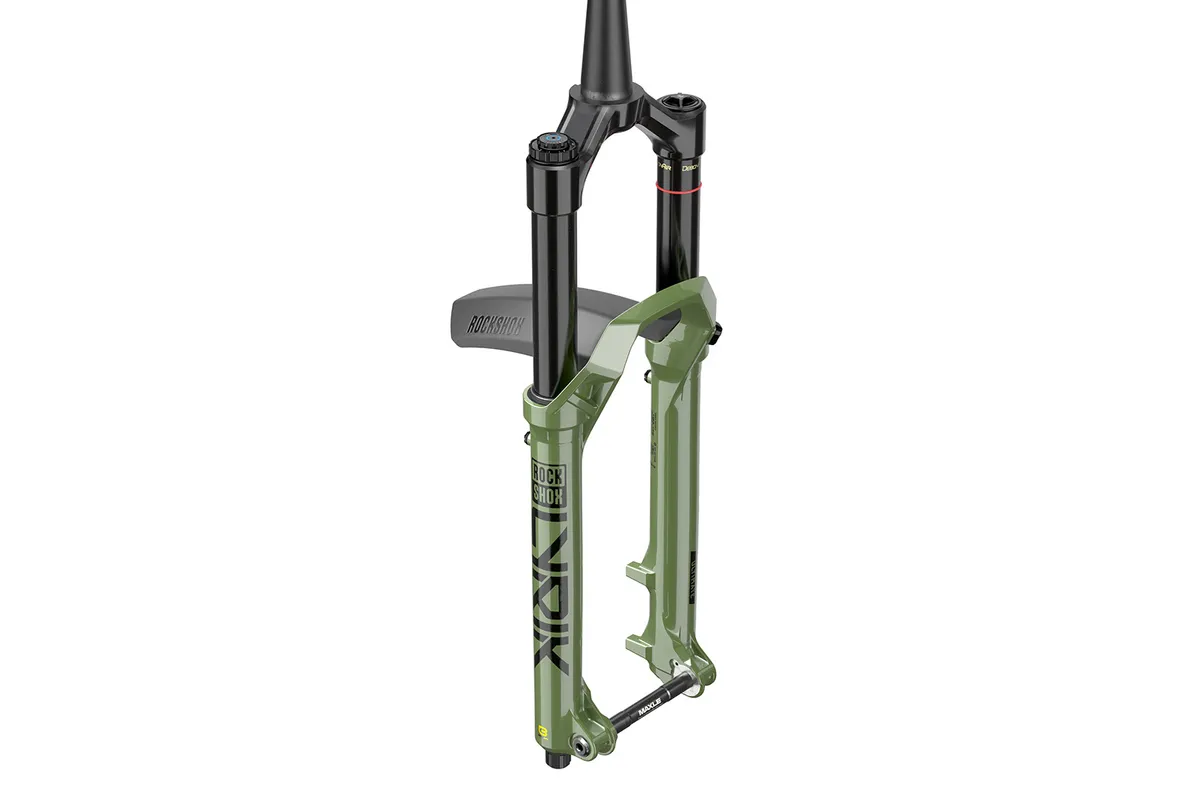
- Price: £1,069 / $1,107 / €1,196
- Damper: Charger RC2 with ButterCups
- Spring: DebonAir+ with ButterCups
- Pressure Relief valves: Yes
- Bushings: Ultimate Bushing Package
- Travel: 140, 150 or 160mm
- Wheel size: 27.5in or 29in
- Offset: 37mm (27.5in) or 44mm (29in)
RockShox Lyrik Select+
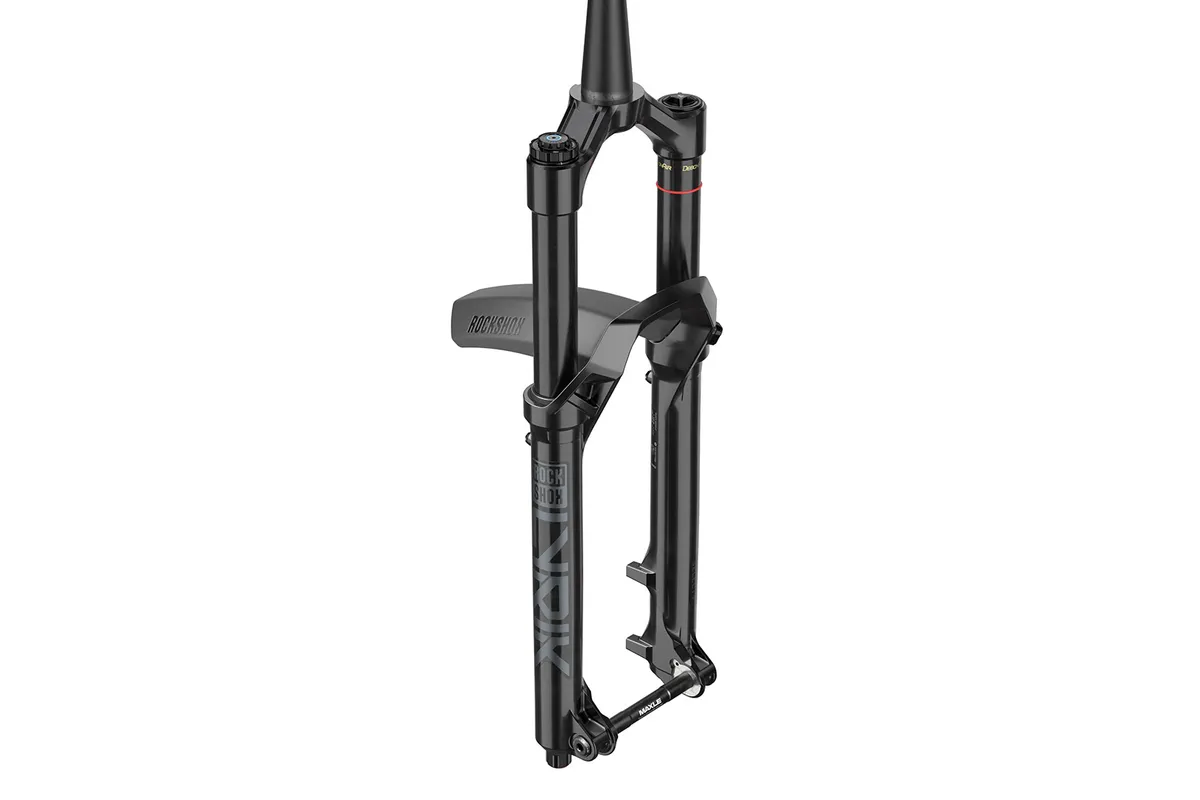
- Price: OE only
- Damper: Charger 3 RC2
- Spring: DebonAir+
- Pressure-relief valves: Yes
- Bushings: Standard
- Travel: 140, 150 or 160mm
- Wheel size: 27.5in or 29in
- Offset: 37mm (27.5in) or 44mm (29in)
RockShox Lyrik Select
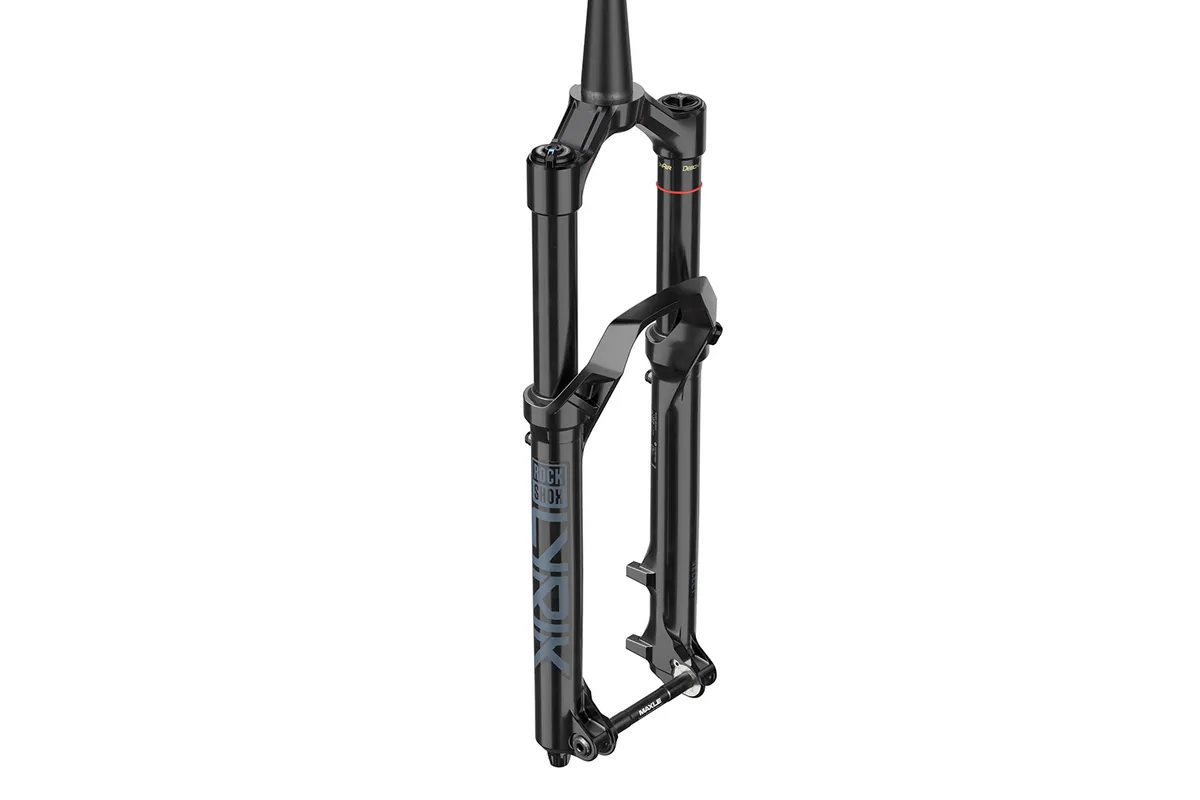
- Price: £813 / $843 / €912
- Damper: Charger RC
- Spring: DebonAir+
- Pressure Relief valves: No
- Bushings: Standard
- Travel: 140, 150 or 160mm
- Wheel size: 27.5in or 29in
- Offset: 37mm (27.5in) or 44mm (29in)
RockShox Lyrik
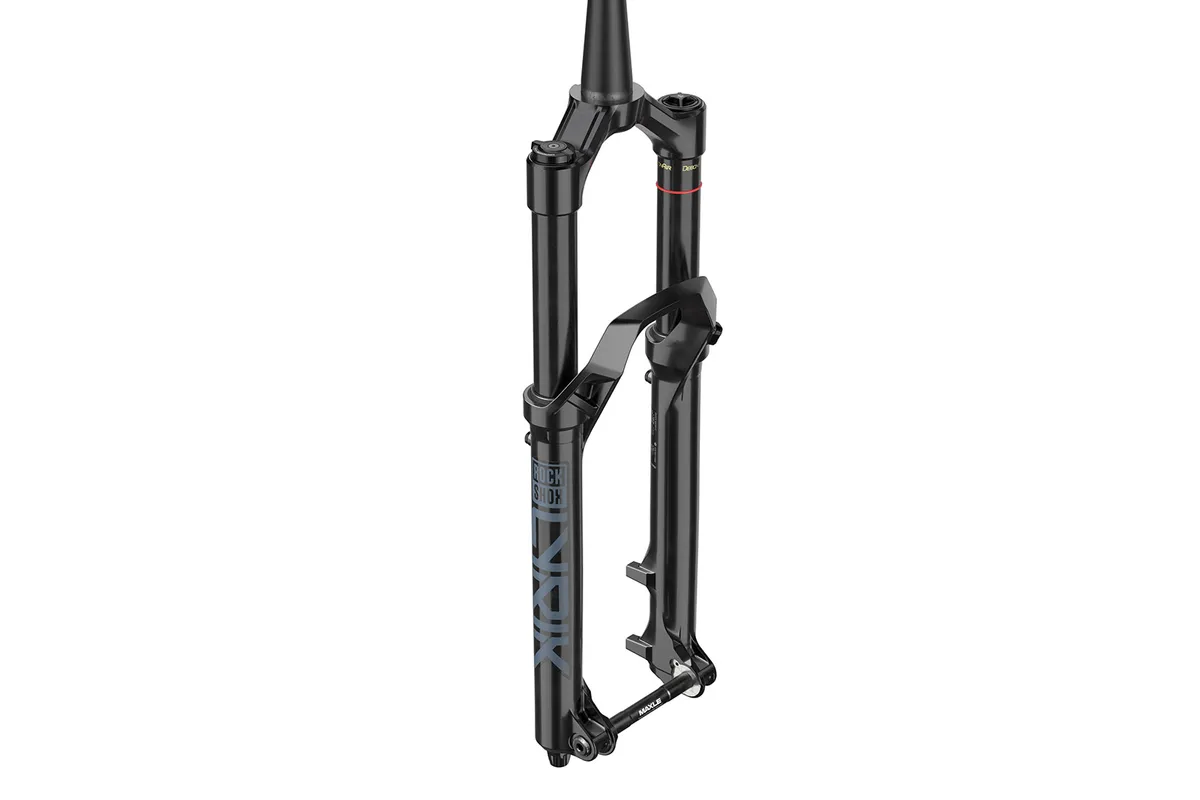
- Price: OE only
- Damper: Rush RC
- Spring: DebonAir+
- Pressure-relief valves: No
- Bushings: Standard
- Travel: 140, 150 or 160mm
- Wheel size: 27.5in or 29in
- Offset: 37mm (27.5in) or 44mm (29in)
RockShox ZEB Ultimate
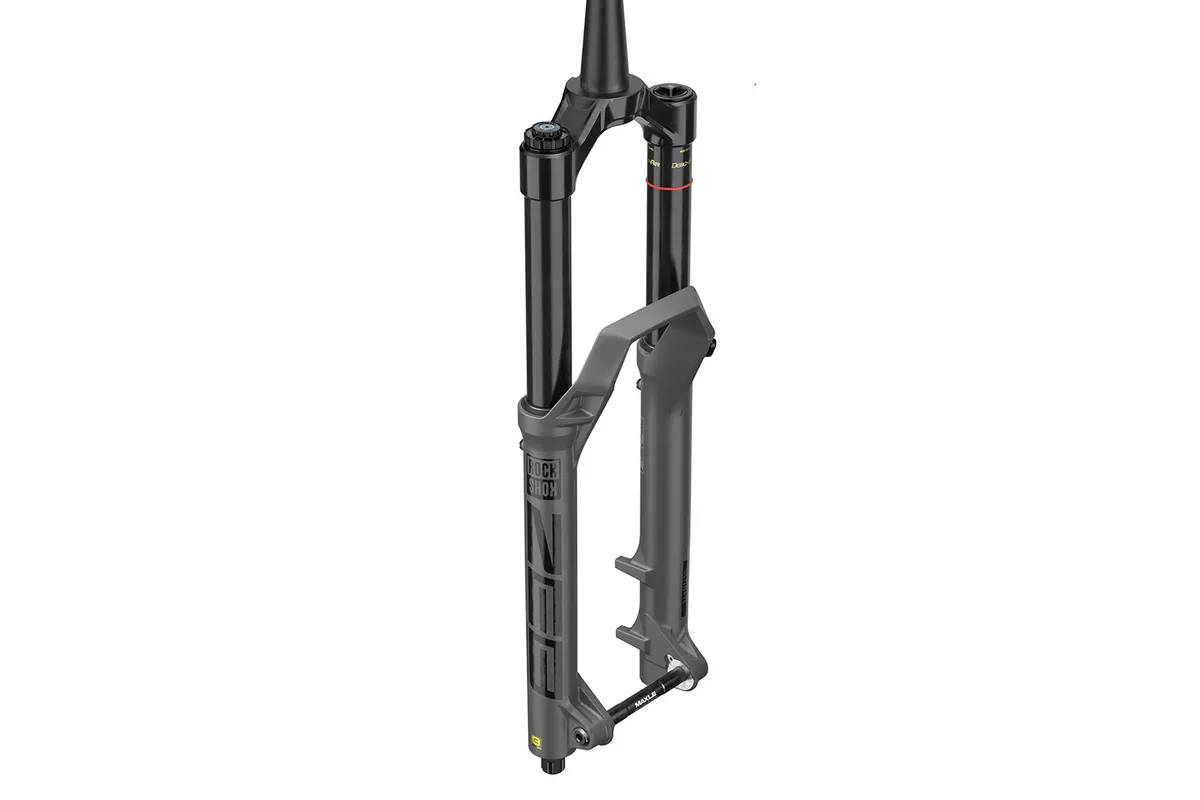
- Price: £1,119 / $1,159 / €1,253
- Damper: Charger 3 RC2 with ButterCups
- Spring: DebonAir+ with ButterCups
- Pressure-relief valves: Yes
- Bushings: Ultimate Bushing Package
- Travel: 160, 170, 180 or 190mm
- Wheel size: 27.5in or 29in
- Offset: 37mm (27.5in) or 44mm (29in)
RockShox ZEB Select+
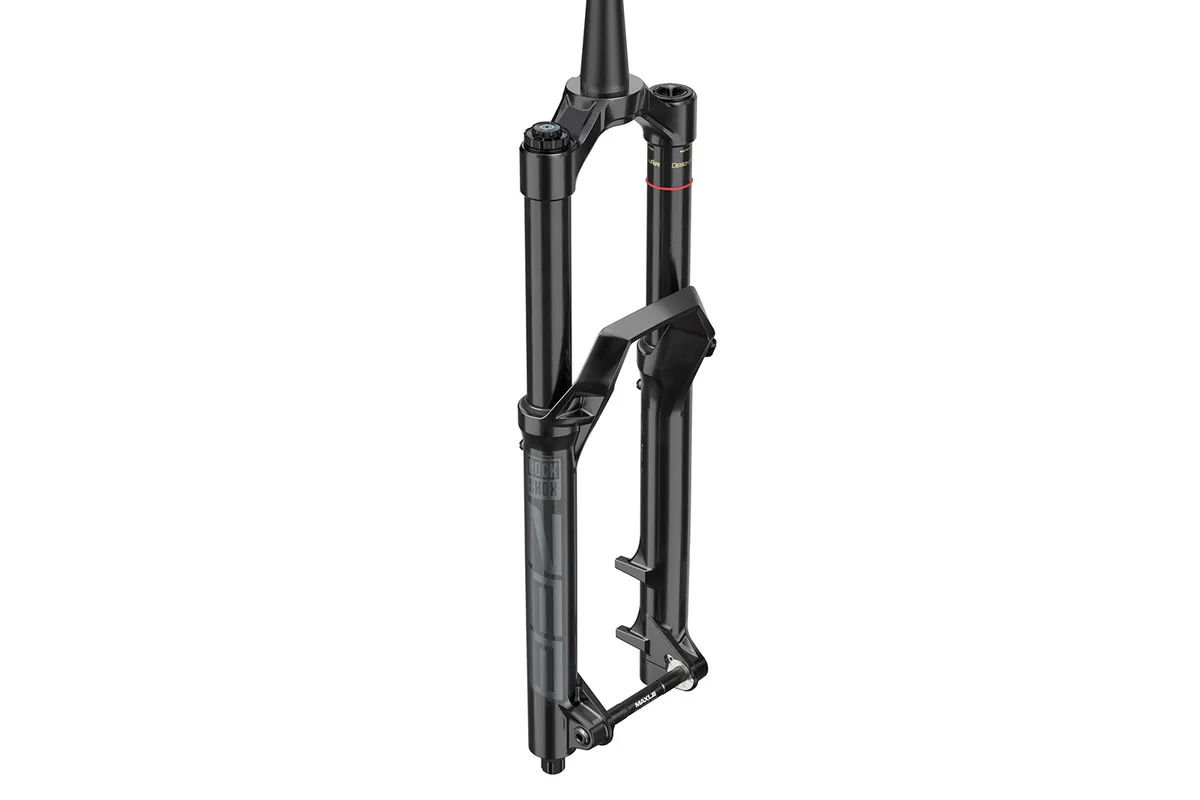
- Price: OE Only
- Damper: Charger 3 RC2
- Spring: DebonAir+
- Pressure-relief valves: Yes
- Bushings: Standard
- Travel: 160, 170, 180 or 190mm
- Wheel size: 27.5in or 29in
- Offset: 37mm (27.5in) or 44mm (29in)
RockShox ZEB Select
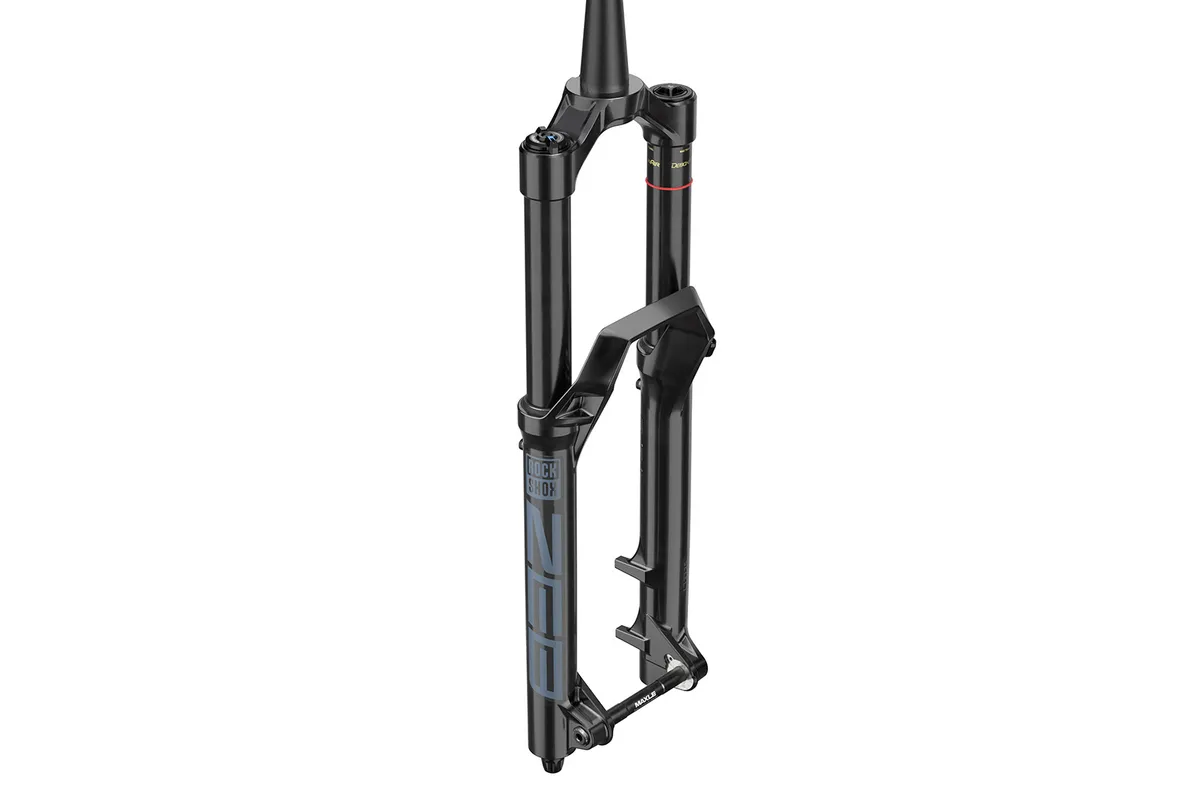
- Price: £864 / $896 / €968
- Damper: Charger RC
- Spring: DebonAir+
- Pressure-relief valves: No
- Bushings: Standard
- Travel: 160, 170, 180 or 190mm
- Wheel size: 27.5in or 29in
- Offset: 37mm (27.5in) or 44mm (29in)
RockShox ZEB
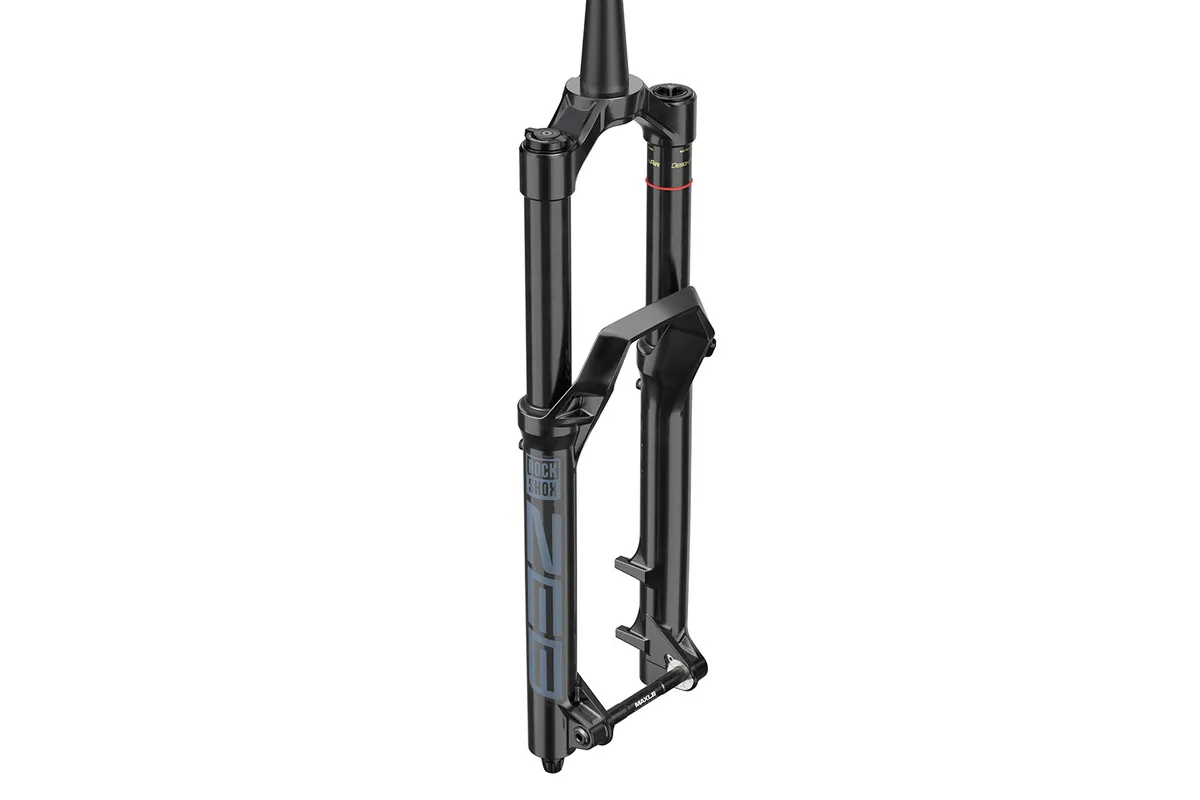
- Price: OE Only
- Damper: Rush RC
- Spring: DebonAir+
- Pressure-relief valves: No
- Bushings: Standard
- Travel: 160, 170, 180 or 190mm
- Wheel size: 27.5in or 29in
- Offset: 37mm (27.5in) or 44mm (29in)
2023 RockShox ZEB Ultimate first-ride impressions

I’ve had a 2023 ZEB Ultimate bolted onto a 2023 Santa Cruz Megatower for a couple of weeks now and have had a little bit of time to get familiar with it.
Setup was straightforward and easy enough, and I didn’t need to stray too far from recommended air-pressure settings to get the fork feeling good.
RockShox recommends between 50 and 59psi for my 68kg weight. I settled on 54.5psi with nine clicks of low-speed compression damping (from fully closed), two of high-speed and 18 of rebound damping (pretty much fully open).
After a couple of runs on the 2022 fork, I switched over to the new 2023 fork. Once dialled in, the difference is certainly noticeable.
Yes, the new fork is quieter, but I did have to do some fiddling with the adjusters to get it feeling as I’d have liked. That’s mainly because now, the adjusters seem to do more.
That means where I’d previously relied more heavily on the air spring to provide most of what I was after, leaving the high-speed compression adjustment fully open and only using a touch of low-speed compression damping, I could now fine tune the fork more easily.

And when I say the dials work, they really do. I tried running the low-speed fully closed, then fully open, before doing the same with the high-speed compression. Even a couple of clicks with either has a marked effect on handling.
Too little low-speed damping and I really felt the fork diving and riding too low into its travel, properly unsettling the balance of the bike, particularly through the turns. Similarly, with too much high-speed damping wound on, when you clout into nasty bumps, you can really feel the damping get to work.
However, what was interesting was that I needed a bit of both the low- and high-speed compression damping to perfect setup, unlike the previous generation. Without, while the spring pressure felt right, I needed to use it to maintain the dynamic geometry of my bike.
It’s smooth too, and supple, just as RockShox promises. Smaller chatter is dealt with just as capably as bigger hits, and all in a very controlled and composed manner.
I’ll have a full review coming soon, so please stay tuned for more in the near future.
